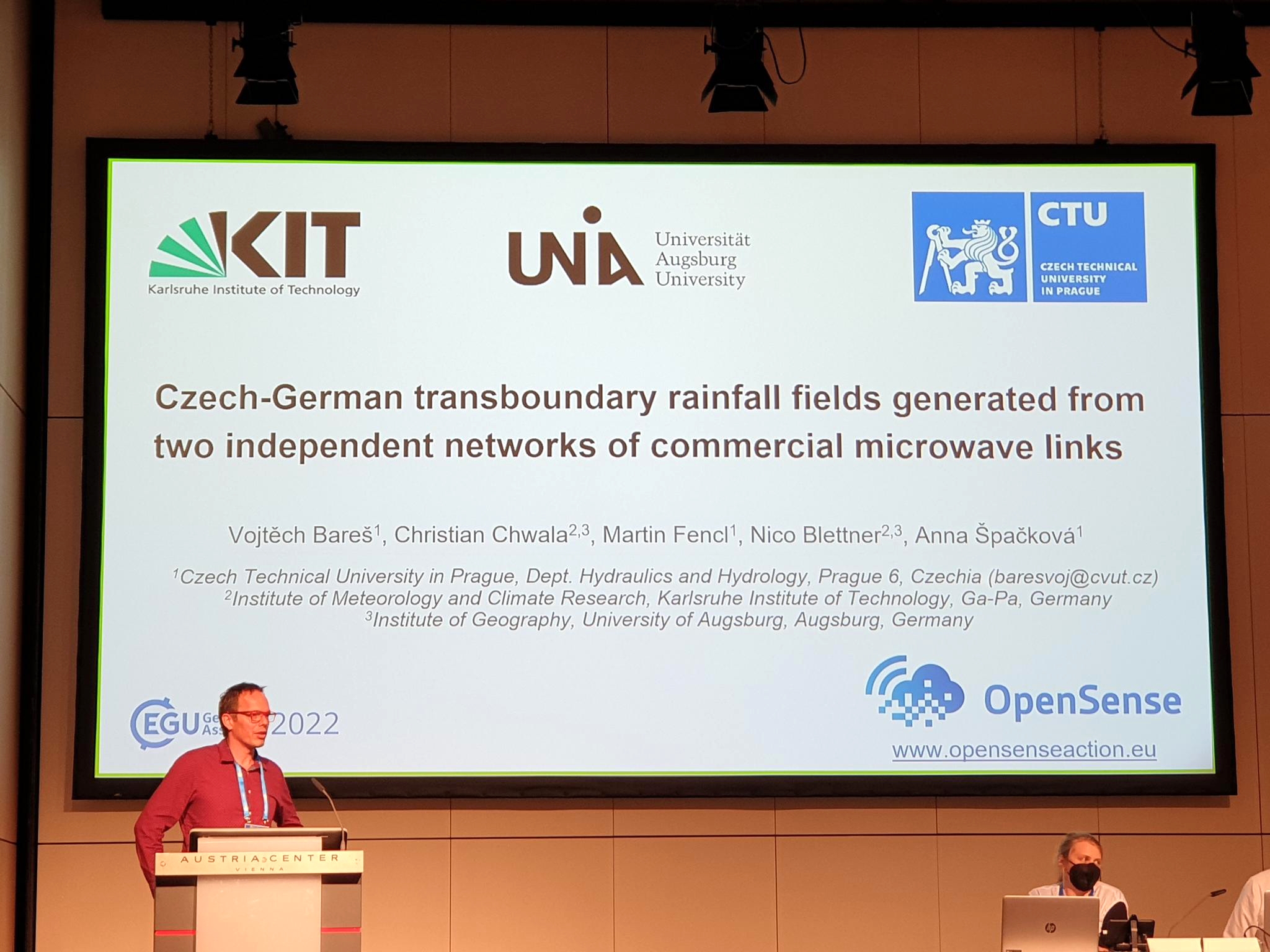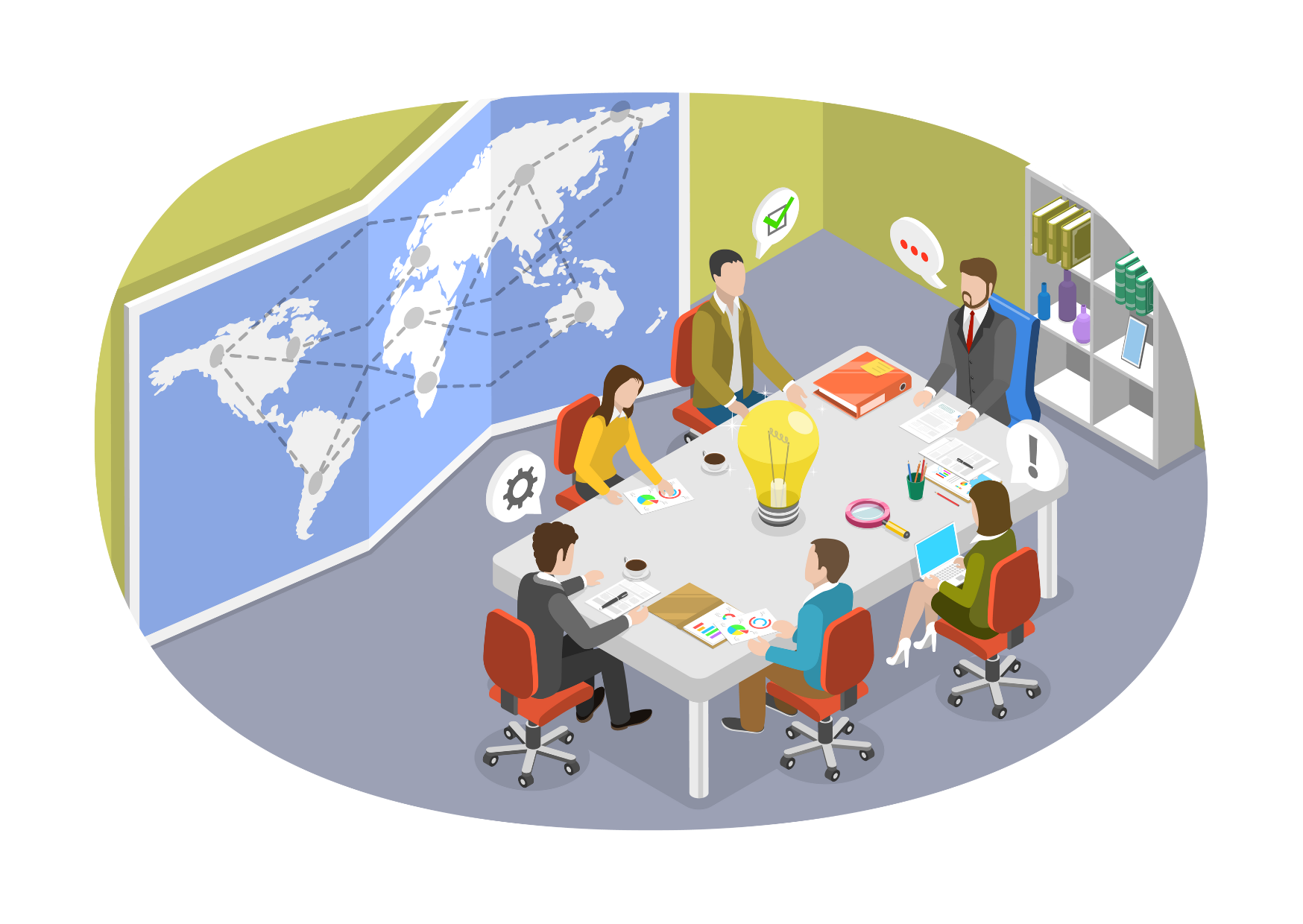The European Geosciences Union General Assembly took place on 23–27 May 2022 in Vienna. OpenSense members shared their latest results in many different sessions both on-site and virtual.
Due to this year’s presentation form and the absence of poster sessions, meeting colleagues and discussing new results were mainly done during lunch breaks and dinners, while the hybrid format gave room for a larger group of virtual participants.
Here you can find a selection of works presented at EGU 2022:
Czech-German transboundary rainfall fields generated from two independent networks of commercial microwave links
Vojtech Bares1, Christian Chwala2,3, Martin Fencl1, Nico Blettner2,3, Anna Spackova1
1Dept. Hydraulics and Hydrology, Czech Technical University in Prague, Prague, Czechia
2Institute of Meteorology and Climate Research, Karlsruhe Institute of Technology, Campus Alpin, Garmisch-Partenkirchen, Germany
3Institute of Geography, University of Augsburg, Augsburg, Germany

Vojetch Bares presented transboundary rainfall maps derived from two CML networks from the Czech Republic and Germany. He and his co-authors were able to derive rainfall maps unaffected by the potential differences from the two independent networks which proves the potential for continental scale rainfall estimates from CMLs.
Considering local network characteristics and environmental conditions improves rainfall estimates from Commercial Microwave Links in Sri Lanka
Bas Walraven1, Aart Overeem2, Hidde Leijnse2, Miriam Coenders1, Rolf Hut1, Luuk van der Valk1, Remko Uijlenhoet1
1 Department of Water Management, Faculty of Civil Engineering & Geosciences, Delft University of Technology, Delft, The Netherlands
2R&D Observations and Data Technology, Royal Netherlands Meteorological Institute, De Bilt, The Netherlands

Bas Walraven presented results from a CML based rainfall estimates in Sri Lanka which were compared to rain gauges and satellite rainfall products. He showed that a parameter calibration of the software package Rainlink which was previously optimized for the Dutch rainfall climatology leads to improved rainfall estimates.
Missing extremes in CML rainfall estimates due to loss of signal
Maximilian Graf1, Christian Chwala1,2 ,Julius Polz1, Harald Kunstmann1,2
1Institute of Meteorology and Climate Research, Karlsruhe Institute of Technology, Campus Alpin, Garmisch-Partenkirchen, Germany
2Institute of Geography, University of Augsburg, Augsburg, Germany
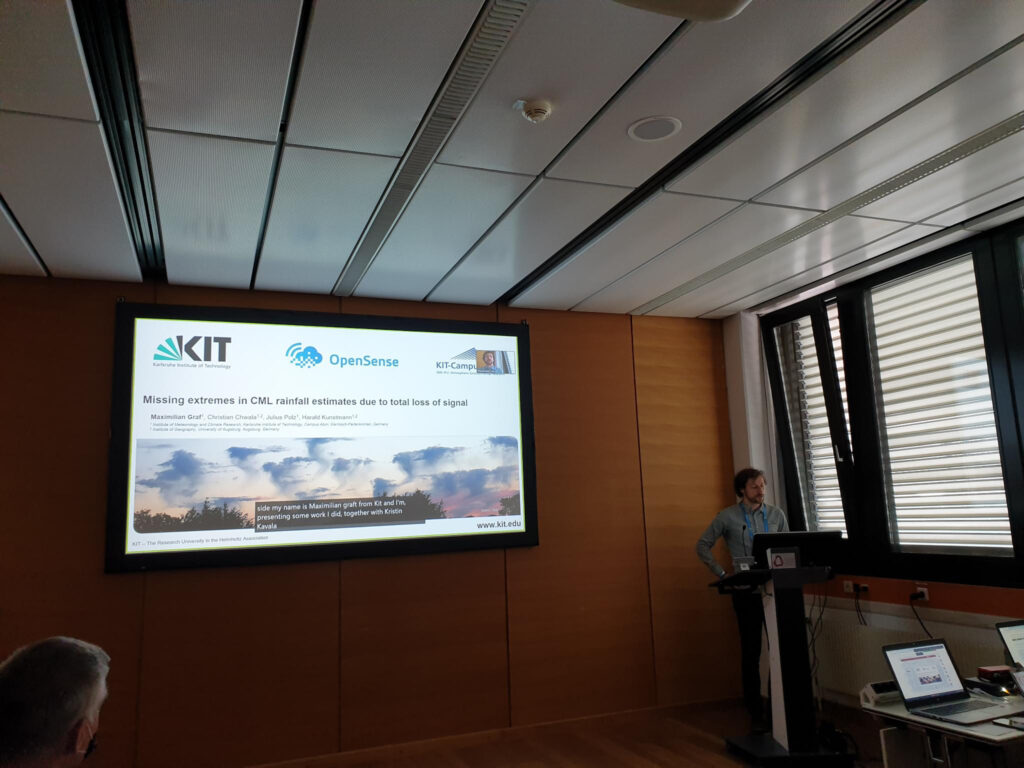
Complete signal loss in CMLs due to extreme rainfall was the topic presented by Maximilian Graf. He showed that on average the most intense one percent of rainfall was missed due to such blackouts per year and CML. A preliminary mitigation measure could improve this underestimation for individual events.
Measuring rainfall with microwave links: the influence of temporal sampling strategies
Luuk van der Valk1, Miriam Coenders-Gerrits1, Rolf Hut1, Hidde Leijnse2,3, Aart Overeem2,3, Bas Walraven1, and Remko Uijlenhoet1
1Department of Water Management, Delft University of Technology, Delft, The Netherlands
2R&D Observations and Data Technology, Royal Netherlands Meteorological Institute (KNMI), De Bilt, The Netherlands
3Hydrology and Quantitative Water Management Group, Wageningen University and Research, Wageningen, The Netherlands
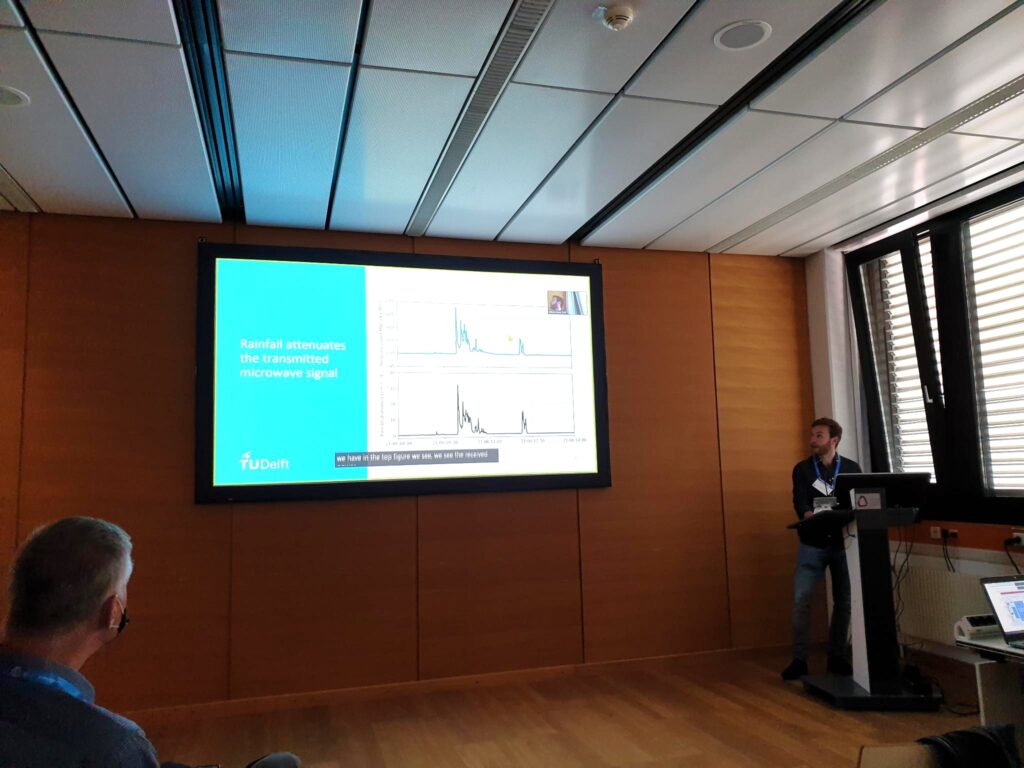
Luuk van der Valk’s presentation consisted of an analysis of the temporal sampling strategies on the performance of CML rainfall estimates. One key result of his presentation was that higher sampling rates lead to higher rainfall intensity maxima.
Effect of diverse microwave link characteristics on rainfall retrieval errors
Martin Fencl1, Anna Spackova1, Vojtech Bares1
1Dept. Hydraulics and Hydrology, Czech Technical University in Prague, Prague, Czechia
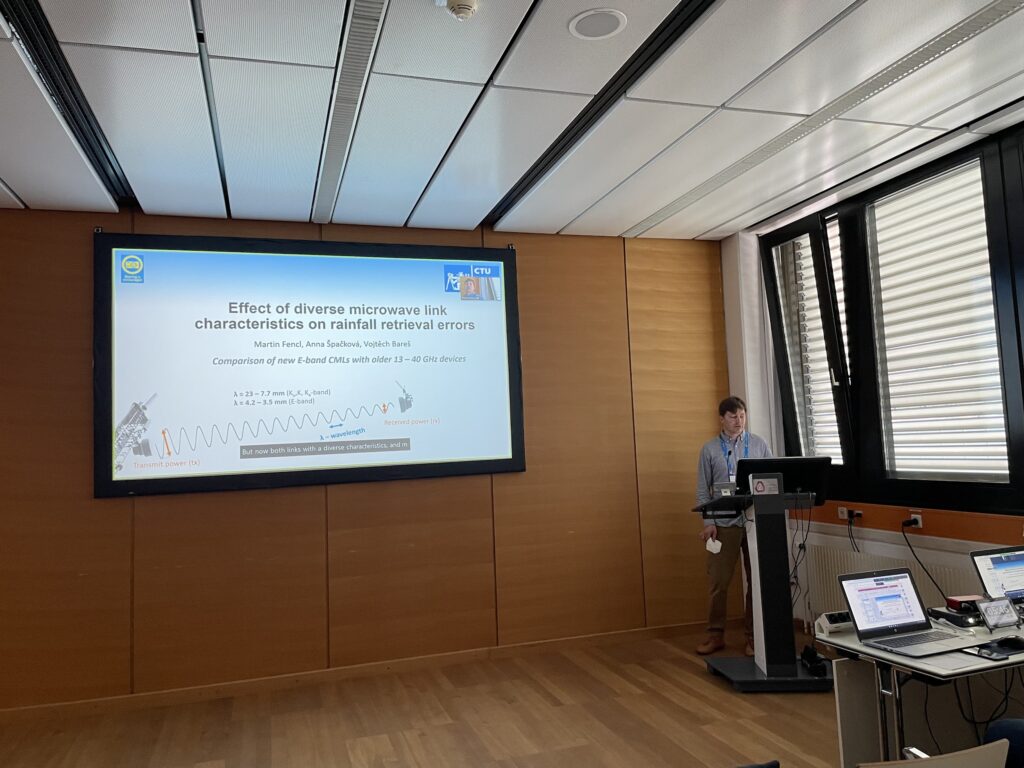
Results from a network of E-Band CMLs were presented by Martin Fencl. He showed that shorter E-band CMLs were more sensitive to low rain rates and thus suitable for retrieving light rainfalls whereas CMLs operating at lower frequencies were more accurate during heavy rainfalls.
If you want more information, the list of abstracts presented at EGU 2022 from the OpenSense community is available here: Meet OpenSense at the EGU!
Follow us on #Instagram, #Facebook and #Twitter and stay updated!
